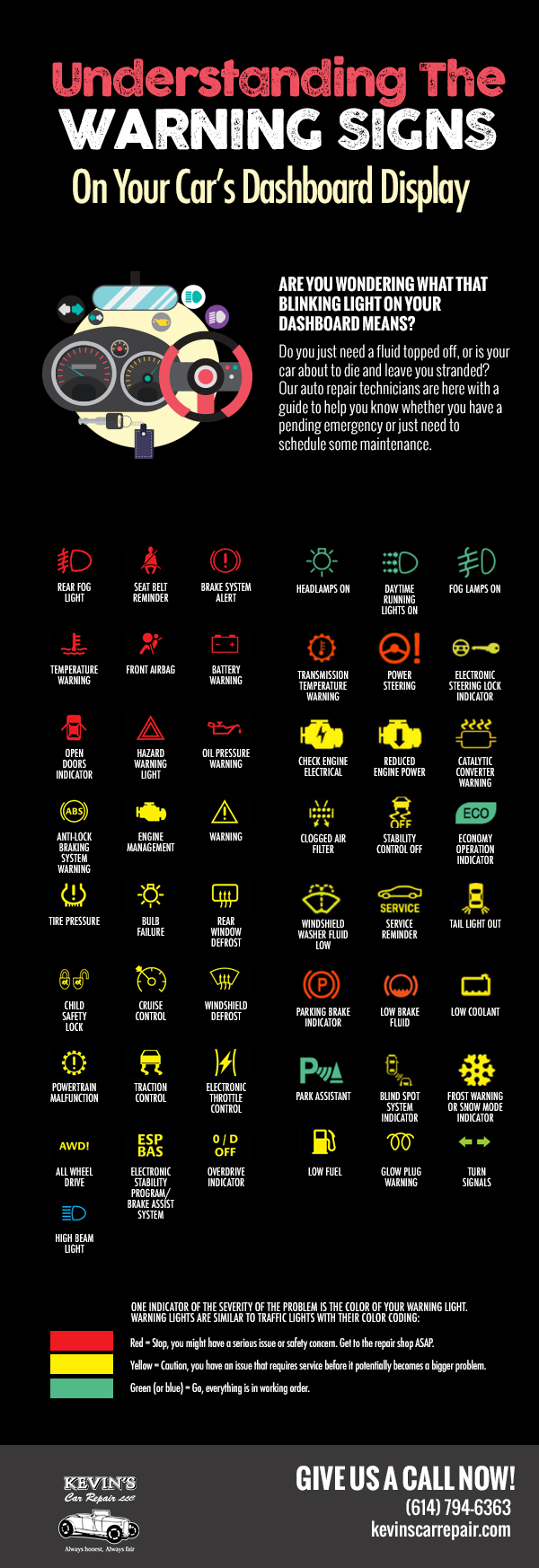Grasping The Significance Of Your Car'S Warning Signals: What They Really Represent
Grasping The Significance Of Your Car'S Warning Signals: What They Really Represent
Blog Article
Material Author-Lim Corbett
When you lag the wheel, those glowing caution lights on your dashboard can be a little bit bewildering. Do you know what they're attempting to inform you regarding your vehicle's wellness? Understanding the significance of these lights is vital for your security and the longevity of your car. So, you can find out more among those lights turns up, would not you want to understand its message properly and take the necessary actions to address it?
Common Warning Lighting and Interpretations
Identify usual warning lights in your auto and understand their significances to ensure risk-free driving.
One of the most common caution lights include the check engine light, which signals problems with the engine or emissions system. If this light begins, it's vital to have your car checked quickly.
The oil pressure advising light indicates low oil pressure, requiring immediate focus to prevent engine damages.
A blinking battery light may suggest a faulty charging system, potentially leaving you stranded if not attended to.
The tire stress surveillance system (TPMS) light notifies you to low tire pressure, affecting lorry security and fuel efficiency. Disregarding this might bring about harmful driving problems.
The abdominal muscle light suggests a trouble with the anti-lock braking system, compromising your ability to quit rapidly in emergency situations.
Last but not least, the coolant temperature level advising light warns of engine overheating, which can lead to severe damage otherwise resolved quickly.
Recognizing https://brake-rotor-replacement-c06283.frewwebs.com/31801378/the-effect-of-auto-outlining-on-resale-value-what-studies-program will assist you address concerns immediately and preserve secure driving conditions.
Relevance of Prompt Attention
Recognizing the usual caution lights in your vehicle is just the first step; the significance of without delay resolving these cautions can't be stressed sufficient to guarantee your safety on the road.
When a caution light illuminates on your dashboard, it's your cars and truck's means of communicating a prospective problem that requires attention. Disregarding these warnings can cause extra serious issues down the road, endangering your security and potentially costing you more out of commission.
Trigger interest to alerting lights can prevent failures and crashes. For instance, a flashing check engine light could indicate a misfire that, if left neglected, can cause damages to the catalytic converter. Addressing this promptly can save you from a pricey fixing.
Likewise, a brake system warning light may signify reduced brake fluid or worn brake pads, important elements for your safety and security when driving.
DIY Troubleshooting Tips
If you see a caution light on your dashboard, there are a few DIY troubleshooting tips you can try prior to seeking expert assistance.
The primary step is to consult your cars and truck's handbook to recognize what the certain caution light indicates. Often the problem can be as basic as a loose gas cap setting off the check engine light. Tightening up the gas cap might deal with the trouble.
One more typical problem is a reduced battery, which can trigger numerous warning lights. Examining the battery connections for rust and ensuring they're safe could fix the problem.
If a warning light persists, you can try resetting it by detaching the vehicle's battery for a couple of mins and then reconnecting it. In addition, examining your car's liquid levels, such as oil, coolant, and brake fluid, can help troubleshoot alerting lights connected to these systems.
Conclusion
In conclusion, comprehending your vehicle's caution lights is crucial for keeping your lorry running smoothly and securely. By immediately dealing with these signals and understanding what they indicate, you can prevent pricey repair work and potential break downs.
Keep in mind to consult your auto's guidebook for particular details on each advising light and take action as necessary to make sure a hassle-free driving experience.
Keep notified, stay risk-free when driving!
